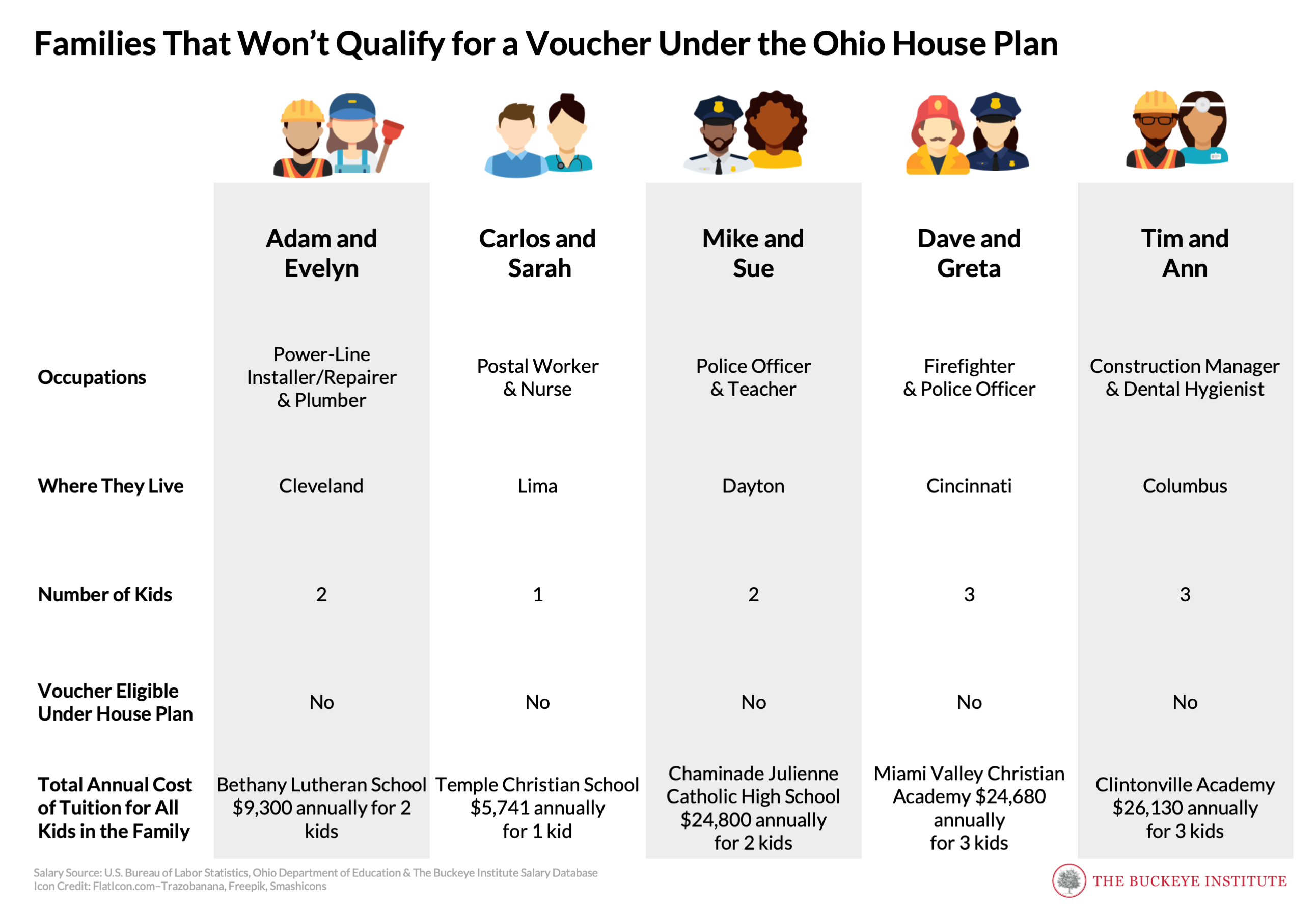The Buckeye Institute: The Ohio Senate Can Put #StudentsFirst with Universal School Choice
May 10, 2023Columbus, OH – On Wednesday, The Buckeye Institute submitted written testimony (see full text below or download a PDF) to the Ohio Senate Education Committee on the K-12 education policies included in House Bill 33, Ohio’s biennial budget, which would expand important school choice options to more Ohio families.
As he did in previous testimony, Greg R. Lawson, a research fellow at The Buckeye Institute, outlined the “historic decline” Ohio students have experienced in academic performance” and applauded lawmakers for proposals to expand school choice. Lawson went on to call on the Ohio Senate to “make all students eligible for Ohio’s most successful school choice program to date and increase funding for our public charter schools.”
In urging the Ohio Senate to act, Lawson highlighted a recent analysis by The Buckeye Institute that found “many working-class families would still be ineligible” for EdChoice under the budget passed by the Ohio House.

In this testimony, and in a recent opinion piece published in The Lima News, Lawson urged the Senate to take action to help these working families who “ deserve the same opportunity to help their children succeed in school with an educational environment that best fits their students’ needs.”
# # #
Put Students First with Universal School Choice
Interested Party Testimony
Ohio Senate Education Committee
Ohio House Bill 33
Greg R. Lawson, Research Fellow
The Buckeye Institute
May 10, 2023
As Submitted
Thank you, Chair Brenner, Vice Chair O’Brien, Ranking Member Ingram, and members of the Committee, for the opportunity to submit written testimony regarding K-12 education policy in House Bill 33.
My name is Greg R. Lawson, I am a research fellow at The Buckeye Institute, an independent research and educational institution—a think tank—whose mission is to advance free-market public policy in the states.
Ohio policymakers must help our K-12 students overcome a historic decline in academic performance brought on by the COVID-19 school closures. Studies out of The Ohio State University and the Thomas B. Fordham Institute show alarming learning loss. The Fordham Institute study, for example, reports that statewide math proficiency scores have dropped 10 percent among fourth and sixth graders and have fallen 14 percent among eighth graders compared to the academic years just before the pandemic. Such declines make expanding and improving school choice initiatives for families even more imperative. Sensible school choice provisions in House Bill 33 will help, but the Ohio Senate can and should go further.
Governor Mike DeWine proposed extending Ohio’s EdChoice voucher eligibility to 400 percent of the federal poverty line. A good start. The House went a bit further and has proposed extending household eligibility up to 450 percent of the poverty line. A healthy improvement. But with a $6 billion surplus of taxpayer money currently sitting in state coffers, now is the time for the Senate to make all students eligible for Ohio’s most successful school choice program to date and increase funding for our public charter schools.
Learning needs vary—even among children in the same family. The local public school may be perfectly fine for one child, while a sibling would learn better in a charter school, a private school, or a different school across town. EdChoice, the state’s largest voucher program, acknowledges those differences and gives more than 57,000 students and their families more academic options. And those options are important. A meta-analysis of rigorous studies shows improved test scores for voucher recipients, and other studies show more parental satisfaction, higher graduation rates, and better college attendance.
As The Buckeye Institute outlined in an op-ed published earlier this week in The Lima News, EdChoice would grow under House Bill 33, but many working-class families would still be ineligible. A recent analysis by The Buckeye Institute found that under the House’s and administration’s budget proposals a two-income, one-child family in Lima with a postal worker and a nurse each earning the median pay in their fields would not qualify for an EdChoice voucher. Similarly, neither would a two-child Cleveland household with a power-line installer and a plumber, or a Dayton-area police officer and teacher with two kids. These working-class families deserve the same opportunity to help their children succeed in school with an educational environment that best fits their students’ needs.

Vouchers are not the only way for the General Assembly to help. Public charter schools can be another invaluable option for families. Charter schools currently receive far fewer dollars than traditional district schools and have no access to the Ohio Facilities Construction Commission to help cover building costs even though they are public schools. The Senate should use the budget process to close the 25 percent funding gap on average between charter schools and public district schools. The current budget proposal includes a $3,000 increase for disadvantaged students in high-performing charter schools through the Quality Community School Support Fund and an additional $500 per charter student to aid in capital construction costs. These are laudable first steps, but all brick-and-mortar charter schools should have access to more funding. An additional $1,000 per-pupil would help reduce the regrettable funding disparity considerably.
State coffers are brimming with surplus taxpayer cash. Expanding vouchers and investing in successful charter school programs to reduce funding disparities will go a long way toward regaining lost academic ground, and will help Ohio keep pace with significant education reforms already underway in Arizona, Iowa, Utah, and Florida. Every K-12 student should have the opportunity to learn in academic environments most suited to them, and state policymakers should take this historic opportunity to provide it.
Thank you for your time and attention.
# # #
